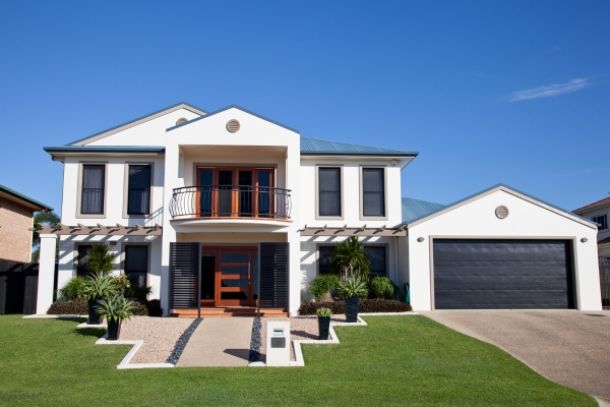Revolutionary Techniques in DIY Wooden Home Maintenance: A Modern Approach
Revolutionary Techniques in DIY Wooden Home Maintenance: A Modern Approach
Maintaining a wooden home requires a blend of traditional care and modern technology. As DIY enthusiasts increasingly embrace innovation, revolutionary techniques in wooden home maintenance are transforming the way we care for these structures. By integrating smart sensors, predictive maintenance, eco-friendly coatings, and sustainable cleaning methods, homeowners can ensure that their wooden homes remain durable, energy-efficient, and aesthetically appealing for generations. This article explores these groundbreaking maintenance strategies and provides practical advice for DIY builders seeking to modernize their upkeep routine.
Introduction
Wooden homes are cherished for their natural beauty, warmth, and environmental benefits. However, wood is a living material that requires ongoing care to protect it from moisture, pests, UV damage, and general wear. Traditional maintenance methods have served us well over the centuries, yet the rapid advancement of technology offers new tools and techniques that can enhance the longevity of a wooden home. Revolutionary maintenance techniques not only preserve the wood’s inherent beauty but also improve energy efficiency and reduce long-term costs. This modern approach to DIY wooden home maintenance blends time-tested practices with cutting-edge innovations.
Embracing Smart Technology in Maintenance
IoT Sensors and Real-Time Monitoring:
One of the most exciting developments in modern maintenance is the integration of Internet of Things (IoT) sensors. These small, wireless devices can be installed throughout your wooden home to continuously monitor critical parameters such as humidity, temperature, and moisture levels. By collecting real-time data, IoT sensors provide early warnings of potential issues like water infiltration or high humidity levels that can lead to mold growth and wood decay. Homeowners can access this data via smartphone apps, allowing for proactive interventions before small problems escalate.
Predictive Maintenance:
Predictive maintenance uses data analytics to forecast when maintenance actions are required. By analyzing the information gathered by IoT sensors and other monitoring systems, homeowners can predict wear and tear trends and schedule repairs or treatments at optimal times. This approach minimizes unexpected breakdowns and extends the lifespan of the wooden components, ensuring that the structure remains in peak condition.
Advanced Coatings and Treatments
Eco-Friendly Sealants and Finishes:
Protecting the wood from the elements is fundamental to maintenance. Modern eco-friendly sealants and low-VOC (volatile organic compounds) finishes are designed to provide superior protection against UV rays, moisture, and pests while being environmentally responsible. These products penetrate the wood fibers, creating a durable barrier that enhances the natural grain and color. Regular application of these finishes, as recommended by manufacturers, can significantly delay the onset of degradation.
Nanotechnology in Wood Preservation:
Recent advancements in nanotechnology have led to the development of nano-coatings that offer exceptional protection. These ultra-thin layers of protective material bond at a molecular level with the wood, repelling water and dirt while maintaining breathability. Nano-coatings are particularly beneficial for wooden homes in harsh climates, as they provide long-lasting defense without altering the wood’s natural appearance.
Sustainable Cleaning and Upkeep Practices
Green Cleaning Solutions:
Traditional cleaning methods often involve harsh chemicals that can damage wood finishes and harm the environment. In contrast, green cleaning solutions use biodegradable, non-toxic ingredients that are safe for both your home and the planet. DIY enthusiasts can prepare their own eco-friendly cleaning solutions using natural ingredients like vinegar, baking soda, and essential oils. Regular cleaning with these solutions helps remove dirt and grime without compromising the integrity of the wood.
Preventative Maintenance Strategies:
Routine inspections and preventative maintenance are key to prolonging the life of a wooden home. Schedule regular checks for signs of moisture, pest activity, and surface wear. Preventative maintenance might include resealing wood surfaces, cleaning gutters to prevent water pooling, and trimming nearby vegetation that could trap moisture against the structure. A proactive approach reduces the need for extensive repairs and ensures that minor issues are addressed promptly.
Integrating Modern Tools with Traditional Practices
Digital Documentation and Checklists:
Maintaining a wooden home benefits from thorough documentation. Use digital tools to create checklists, log maintenance activities, and store photographs of your home’s condition over time. This record-keeping not only helps you track progress but also provides valuable data for future maintenance decisions. Digital documentation can be shared with professionals for advice, making it easier to pinpoint areas that need attention.
Training and Skill Development:
Advancements in technology are complemented by an increasing availability of online tutorials and workshops. DIY builders can expand their knowledge of modern maintenance techniques through webinars, video guides, and community forums. Staying updated on the latest methods ensures that you can effectively integrate smart technology with traditional wood care practices.
Long-Term Benefits of Revolutionary Maintenance
Enhanced Durability and Aesthetics:
By adopting these modern maintenance techniques, you ensure that your wooden home remains structurally sound and visually appealing over the long term. Continuous monitoring, predictive maintenance, and advanced protective coatings contribute to the longevity of the wood, reducing the frequency of major repairs and preserving its natural beauty.
Energy Efficiency and Cost Savings:
Smart monitoring and energy-efficient treatments lead to lower utility costs by optimizing the performance of heating, cooling, and lighting systems. Over time, these efficiencies translate into significant cost savings, making the initial investment in technology and sustainable products worthwhile.
Environmental Impact:
Eco-friendly maintenance practices not only protect your home but also reduce your environmental footprint. The use of sustainable products, green cleaning methods, and renewable energy-integrated systems supports a holistic approach to sustainable living. By preserving your wooden home with these modern techniques, you contribute to a healthier environment and promote responsible building practices.
Conclusion
Revolutionary techniques in DIY wooden home maintenance represent a fusion of traditional craftsmanship with modern innovation. By integrating smart IoT sensors, predictive maintenance, advanced eco-friendly coatings, and sustainable cleaning practices, homeowners can significantly extend the life of their wooden homes while reducing costs and environmental impact. This modern approach not only preserves the natural beauty of timber but also enhances the overall functionality and energy efficiency of your home. Embrace these innovations, document your progress, and remain proactive in your maintenance efforts to ensure that your wooden home remains a source of pride and comfort for years to come. With a commitment to continuous improvement and sustainable practices, the art of wood preservation becomes a dynamic process that adapts to future challenges while honoring timeless traditions.


